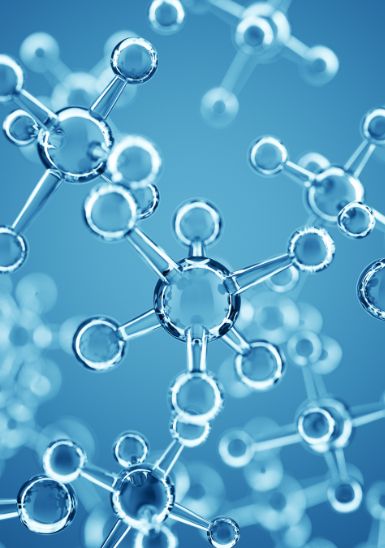Services
Publications
The sulfated polysaccharide fucoidan was extracted frombrown algae Turbinaria conoides using hot water and purifiedby anion-exchange chromatography. The biochemical andmonosaccharide composition of purified fucoidan was studiedby colorimetric assays and Gas Chromatography Mass Spec-trometry (GCMS).
Read more...
The marine environment has evolved over millions of years and is arich source of genetic diversity and novel pharmaceuticals ingredients.With only 16% of marine life been identified so far, the rate of dis-covery of marine species has been higher than terrestrial species sincethe 1950s .
Read more...
Marine environment provides shelter for diverse forms of organism. It bestows target specific abilities to the organisms that thrive in the vast condition by producing biologically active secondary metabolites. There are enormous natural resources harbouring potential bioactive peptides, among which marine environment is the top spot for discovering new drug molecules (Ana etal. 2014).
Read more...
The marine environment with its diversification is rich in flora and fauna including all marine organisms in the earth’s ecosystem. Marine organisms are used completely or partly to synthesize products and to enhance the lifestyle of plants, animals and microorganisms. The marine environment may contain over 80% of the world’s plant and animal species (McCarthy and Pomponi 2004).
Read more...
The molecular architecture study and its role in biological activity have led to the discovery of bioactive molecules. The compounds obtained from various sources of living organisms are of great significance [1]. Such compounds are called as natural products, which account for one-third of the world's best-selling medicines in the pharmaceutical industry.
Read more...
In recent decades, marine organisms are investigated by several scientific communities worldwide for their potent biological activities such as antioxidant, anti-inflammatory, and anti-microbial activity [1]. Among the marine organisms, brown seaweeds play a crucial role in diverse bioactive compound production.
Read more...
The SARS-CoV-2 (Severe Acute Respiratory Syndrome Coronavirus 2) is the causative agent of the global pandemic Coronavirus Disease (COVID-19). To prevent the spread of the infection in the community, high-volume testing together with case isolation and contact tracing is one of the most effective strategies adapted by most countries worldwide
Read more...
Phenol and its derivatives are released as contaminants from different industrial activities. It is no less than two-thirds of phenols formed worldwide are engaged in the chemical syn-thesis of bisphenol A and phenolic resins (Palma et al. 2010). Apart from colouring and conferring smell to water these phenols and their derivatives are proven toxic substances for aquatic creatures even at mild concentrations (5-25mg/mL).
Read more...
In recent decades, marine organisms are investigated by several scientific communities worldwide for their potent biological activities such as antioxidant, anti-inflammatory, and anti-microbial activity [1]. Among the marine organisms, brown seaweeds play a crucial role in diverse bioactive compound production. Phlorotannin is one of the chemical compounds which is metabolites of polyphenols
Read more...
The anglerfishes (order-lophiiformes) have been considered as uniquegroup of fishes which have the unusual morphological, ecological adaptations with tremendous diversification and the varied clade of bony fishes. Presently, 18 families of the “Ogcocephalidae” were reported which includes 10 genera and 70 species worldwide7-9).
Read more...
Stingrays are cartilagenous fishesthat are common in tropical and subtropical marine water throughout the world. These possess one or more barbs in the mid of their tail that act as stingers. These regions are covered with specialized cells, which secreteproteins that cause nociceptive, inflammatory, and necrotic effect (Silva Jr et al.,2015).
Read more...
Marine organisms represent a promising source for natural products of the future due to the incredible diversity of chemical compounds that were isolated. The oceans, which cover almost 70% of the earth’s surface and over 90% of volume of its crust (Fenical, 1993; Whitehead, 1999), contain a variety of species, many of which have no terrestrial counterparts.
Read more...
Sponges are spineless animals belonging to phylum, “the pore bearers” (Porifera), serve as most primitive multi-celled animals existing for millions of year ago. Marine sponges are soft-bodied, sessile and channel feeders gathering little particles of nourishment from ocean water ascending through their bodies11,24.
Read more...
A marine sea-grass Cymodocaea serrulata was collected, dried and extracted with a different solvent. The presences of phytochemical constituents were confirmed and the ethyl acetate extraction was considered to be a suitable solvent. In addition, the crude seagrass was serially diluted and spread onto the Zobell Marine Agar plates.





